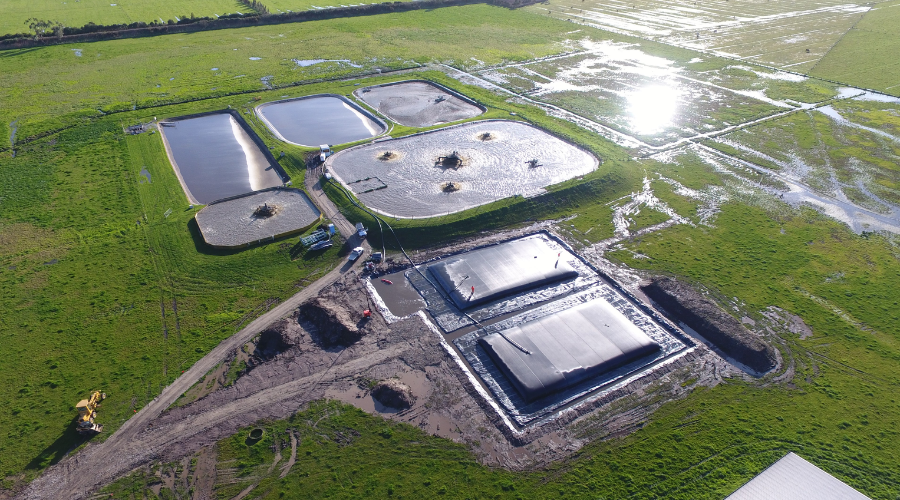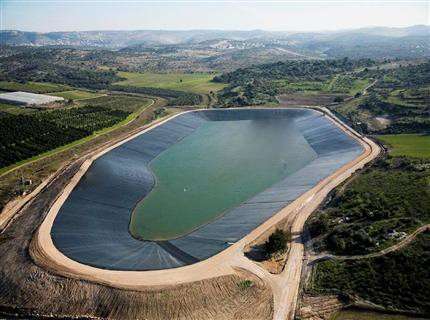
Blog

Jun 14,2023
Geotube Dewatering: Effective Solutions for Sludge and Sediment Management
Do you struggle with sludge and sediment management issues? Are you looking for a practical, long-lasting way to combine these materials and remove surplus water? Consider using tube dewatering instead! Sludge and sediment management is being revolutionized by geotubes, which provide a practical, cost-efficient, and greener option. In this post, we'll delve into tube dewatering and examine its advantages, uses, and efficacy in many fields.
Understanding Geotubes
Large cylindrical structures of highly durable, absorbent geotextile fabric are called geotubes, also known as geotextile tubes. Due to their outstanding performance in confinement and dewatering applications, these tubes have become increasingly popular in recent years. By effectively removing water from sludge and silt, which reduces volume and increases solids concentration, geotube dewatering uses these tubes.
Geotube Dewatering Process
The following steps can be used to summarise the dewatering procedure using geotubes:
1. Picking and Getting Ready
Selecting the proper tube size and fabric parameters based on the application and sludge characteristics is the first stage in tube dewatering. To accommodate a range of volumes and solids contents, geotubes come in several sizes and layouts.
The tubes are placed at the chosen site after being picked. To ensure a firm and level surface that can sustain the weight of the lines and the dewatering procedure, the site must be prepared.
2. Sludge Filling
Pumped or transmitted into the tubes is the sludge that needs to be dewatered. The solids are kept inside, while water can pass through the porous geotextile fabric of the tubes. The tubes are filled with sludge, which starts the dewatering process.
3. Gravity Dewatering
Gravity is a critical factor in the dewatering process as the sludge fills the tubes. Extra water drains out through the geotextile fabric due to the weight of the sludge. Gravity helps the sludge to consolidate, increasing the solids content and decreasing the volume.
Appropriate drainage of the extracted water must be made to avoid collection and possible overflow during gravity dewatering. This can be accomplished through drainage systems or a controlled release into proper bodies of water according to local laws.

4. Consolidation and Self-Weight Dewatering
Consolidation and self-weight dewatering occur after the initial gravity dewatering phase is finished. The solids are further compressed by the weight of the sludge inside the geotubes, expelling more water. The process of self-weight dewatering additionally raises the solids content.
5. Final Drying and Solidification
After consolidation and self-weight dewatering, the tubes are kept in place to allow the sludge to continue drying. The sludge solidifies, and the moisture content significantly decreases during this last drying step. During this phase, the tubes provide containment and support to ensure the sludge stays in place and may finish drying.
6. Sludge Removal and Disposal
The tubes are prepared for sludge removal once the sludge has attained the necessary amount of dewatering and solidification. The tubes can be mechanically or surgically opened and emptied to remove the dewatered sludge. The remaining tube fabric can be cleaned, mended, and utilized for upcoming dewatering work.
The dewatered sludge can now be treated or disposed of by local rules because it is more concentrated and controllable. Sludge disposal methods that are frequently used include land application, incineration, composting, and use as an alternative energy source.
Benefits of Geotube Dewatering
Geotube dewatering is a popular option for managing sludge and silt because it provides several advantages:
Cost-Effective: Compared to conventional dewatering techniques, geotubes offer a more affordable solution. Reduced volume and higher solids concentration result in significant savings in transportation and disposal costs.
Efficiency: The rapid separation of water from sludge or sediment by tube dewatering is a very efficient procedure that enables more significant solids content and rapid consolidation.

Geotubes are adaptable and can be utilized for various tasks, such as wastewater treatment, dredging operations, environmental cleanup, coastline protection, and agriculture.
Environmentally Friendly: Geotube dewatering reduces the need for expensive, energy-intensive mechanical equipment, making it environmentally friendly. The procedure encourages natural dewatering and lessens the adverse effects of disposing of sludge and sediment on the environment.
Flexibility: Geotubes can be made in any size or shape to meet the needs of various projects. They offer flexibility in application and can be utilized in both temporary and permanent installations.
Primary Applications of Geotube Dewatering
Numerous businesses use tube dewatering, which offers practical solutions for sludge and sediment control. Let's look at some essential fields where geotubes have proven to be helpful:
Wastewater Treatment Facilities
In wastewater treatment facilities, tube dewatering is essential for separating water from the sludge produced during treatment. Geotubes greatly minimize the amount of sludge that must be disposed of by eliminating extra water; this lowers disposal costs and increases plant productivity.
Dredging Activities
Large amounts of silt are frequently produced by dredging operations and must be effectively managed. Dewatering and consolidating the dredged material using geotubes is a workable approach. Geotubes reduce the amount of water that needs to be transported and treated, which has resulted in reduced cost and less environmental impacts.
Environmental Remediation
Geotube dewatering assists in removing and containing contaminated silt in environmental remediation projects. The volume of the contaminated material is reduced during the dewatering process, making it simpler to handle and dispose of. A practical and long-lasting method of handling dangerous or contaminated sediments is provided by tubes.
Shoreline Defence
Tubes are frequently used in shoreline protection projects to stop erosion and stabilize coastal areas. Sand or any suitable fill material can be inserted inside the tubes using geotube dewatering to build structures that serve as barriers against tidal and wave action. The fill material is carefully consolidated and securely controlled during dewatering, ensuring long-lasting protection for coastal communities.

Agriculture and Land Reclamation
Agriculture and land reclamation initiatives use tube dewatering. It can dewater and consolidate organic waste, like manure or slurry, simplifying handling and disposal. Geotubes can also help with land reclamation projects by hardening and dewatering dredged soil or debris to create solid foundations for building or farming operations.
FAQs
Q: How does geotube dewatering differ from other dewatering methods?
A: Geotube dewatering relies on the natural processes of gravity and permeability to remove water from sludge or sediment, whereas other methods may involve mechanical or chemical processes.
Q: Are geotubes durable and long-lasting?
A: Geotubes are designed to withstand harsh environmental conditions and have proven durable and long-lasting. Their geotextile fabric is engineered to resist UV degradation, chemical exposure, and abrasion.
Q: Can geotube dewatering be used for large-scale projects?
A: Geotube dewatering is scalable and can be employed for projects of various sizes, from small-scale applications to large-scale industrial projects.
Q: What happens to the water extracted during tube dewatering?
A: The extracted water typically undergoes further treatment or is discharged into an appropriate water body in compliance with local regulations.
Q: Are tubes reusable?
A: Geotubes can be reused in some instances. After dewatering, the remaining solids can be removed from the tubes, allowing them to be cleaned, repaired, and used for future projects.







